The serial number; 3089, stamped on the flats of this very peculiar action is of no real help in dating it. The maker, Wiggan & Elliott, is recorded as having been in business in Birmingham from 1859 until 1888 but no records survive.
I have owned three of these guns to date: a 28-bore and two 12-bores. The one pictured is the most recent and, like the other two, is stamped with the words 'ELLIOTT'S PATENT NO.1782. Stamps like this normally indicate the sequential number of guns made under the patent. So, we should expect this to be the one thousand, seven hundred and eighty second gun made on this patent. However, in this case the convention does not apply.
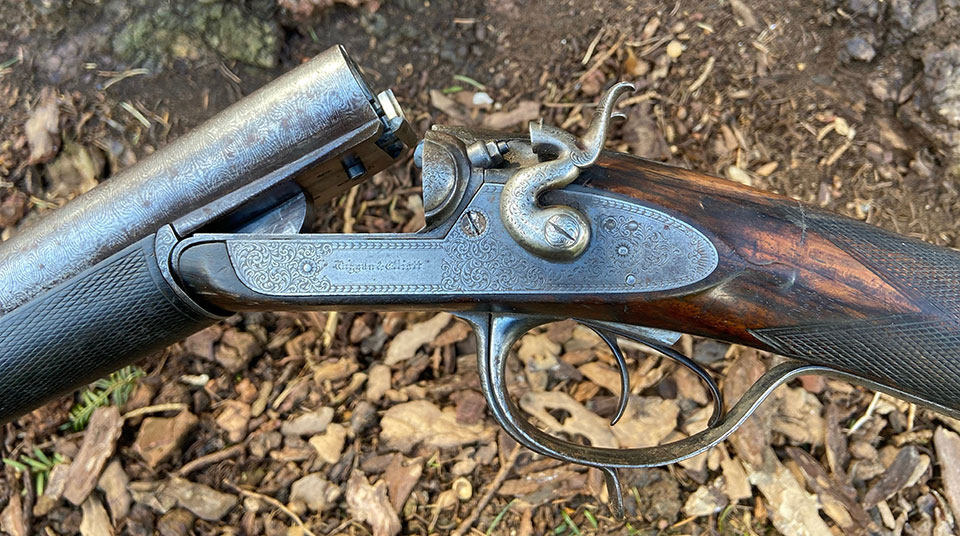
Elliott's patent No.1782 of 1863 is the patent number registered for this particular action, which has a single lump, the hook rotating on the hinge pin, a hole in the action bar and a stud on the barrel flat to mate with it. A single bolt emerges from the top of the action face and slots into a recess in the breech end of the barrels. The bolt is actually the top of the lever, which acts as a push-forward snap-action under-lever.
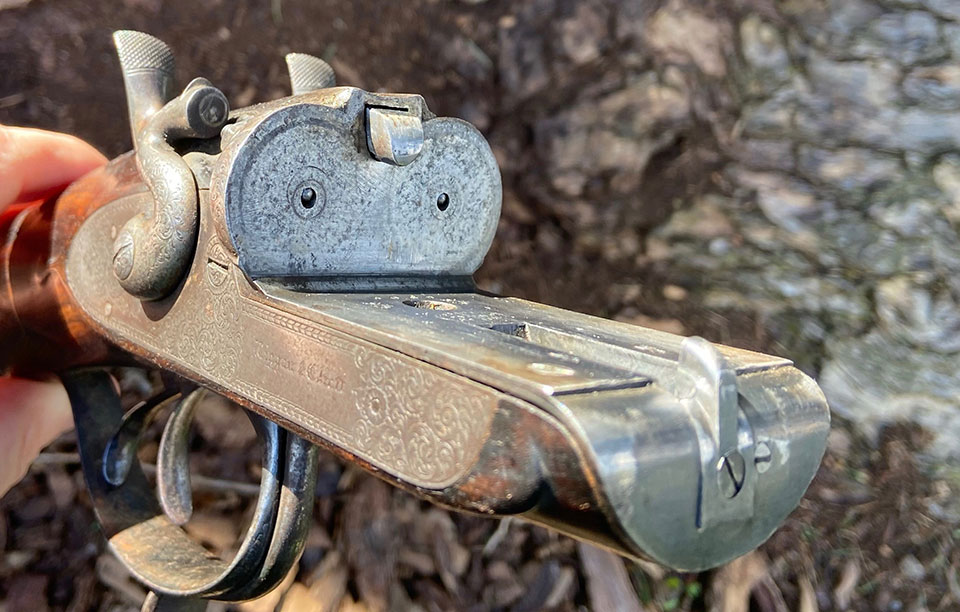
Like the Westley Richards 'doll's head', the Elliott patent bolts the gun shut at the top of the action, at a place which is geometrically efficient, to the extent that even a relatively flimsy looking connection can hold the gun together with sufficient security to withstand prolonged use.
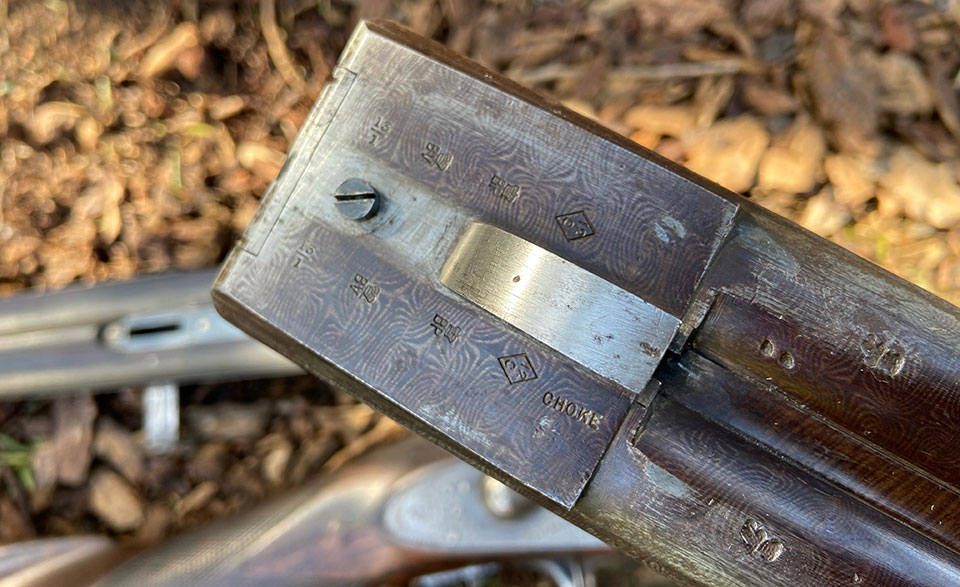
The other Wiggan & Elliott guns I owned carried the wording on the rib: 'Maker to the Royal Family and Pasha of Egypt'. On this gun, however, the unlikely lettering reads 'H.E. POLLARD & Co. GUN MAKERS, WORCESTER' and the damascus barrels bear Birmingham proof marks for nitro, under the 1904 Rules of Proof.
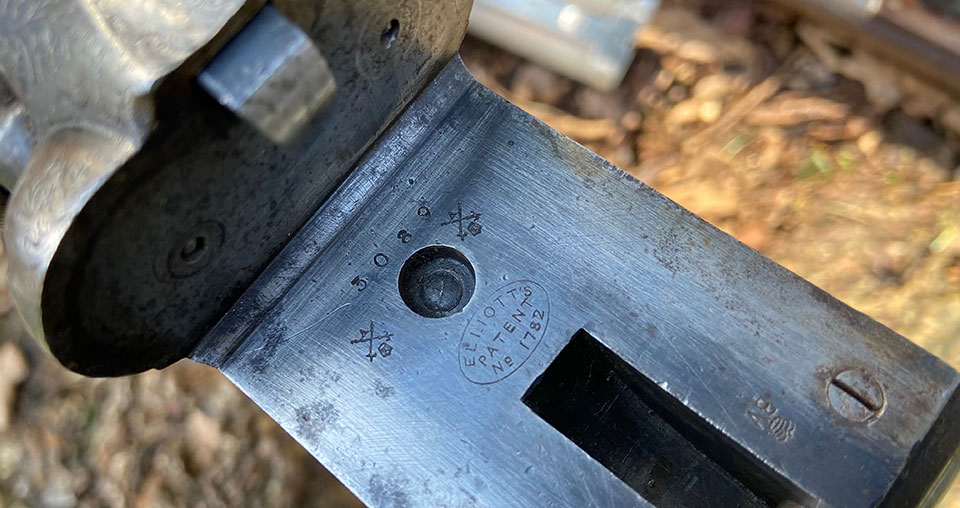
While the barrels appear to be good quality four-iron Damascus, they do not sit one hundred percent convincingly on the action. They work but they don't look quite right. While we can only guess why Pollard was asked to re-barrel this gun, my guess would be that it started life as a pinfire and was converted. It may even have been a smaller gauge. The tubes look a fraction too big for the action and the fences,with their carefully carved lines, do not flow into the barrel profile as they should.
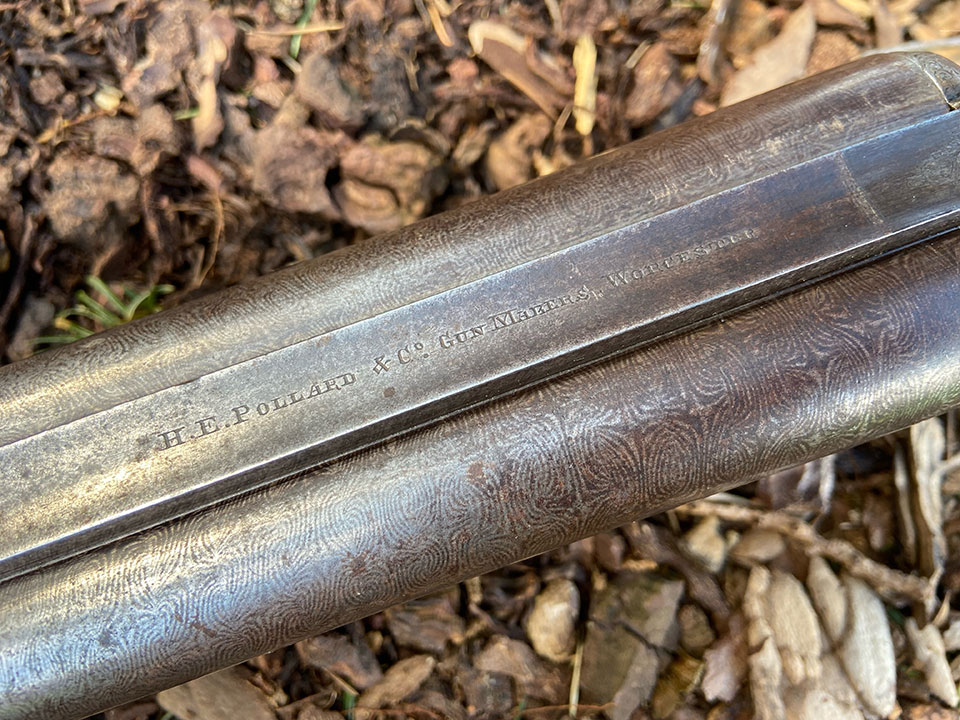
Pinfires could be converted without the need for new barrels, so that does not explain the re-barrelling job entirely. We shall never know the truth of the matter so can only speculate.
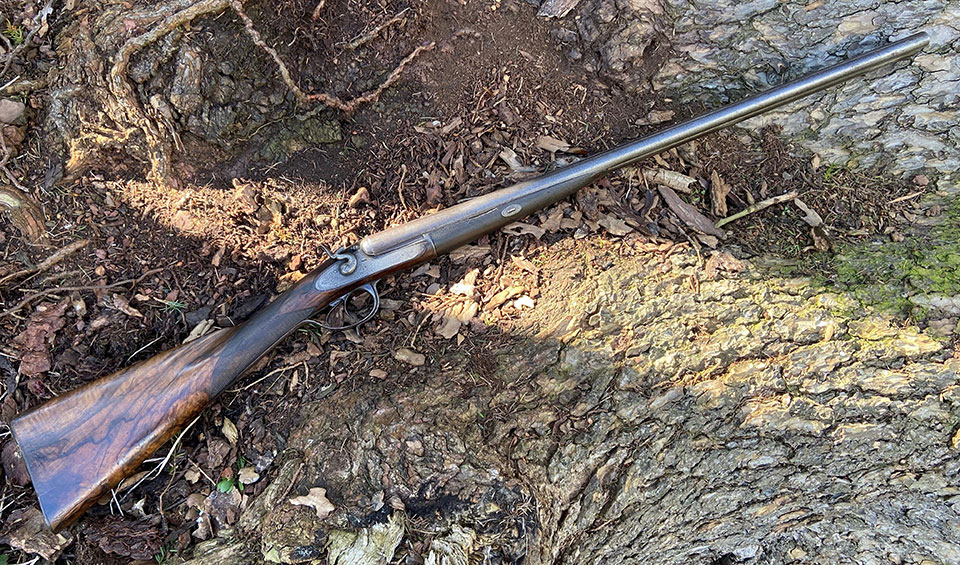
Elliott's patent gun dates from July 1863 and he entered three guns in the Field Trials of 1866, coming twentieth out of thirty two entries (according to Crudgington & Baker). His entries were not generally considered a huge success by the judges.
The gun is well-made and handsome, with a nicely figured French walnut stock in the bar-in-wood style. The wood under the bar is in good condition and free from the cracks that so often blight this type of gun.
The barrels, while sporting a few pits, are still twenty-five thou' at their thinnest points and appear robust. Unfortunately, the ribs appear loose and need stripping and re-laying. The V-spring that secures the bolt in the barrel recess is weak and the gun can be opened by force without the operation of the lever; making it unsuited to use.
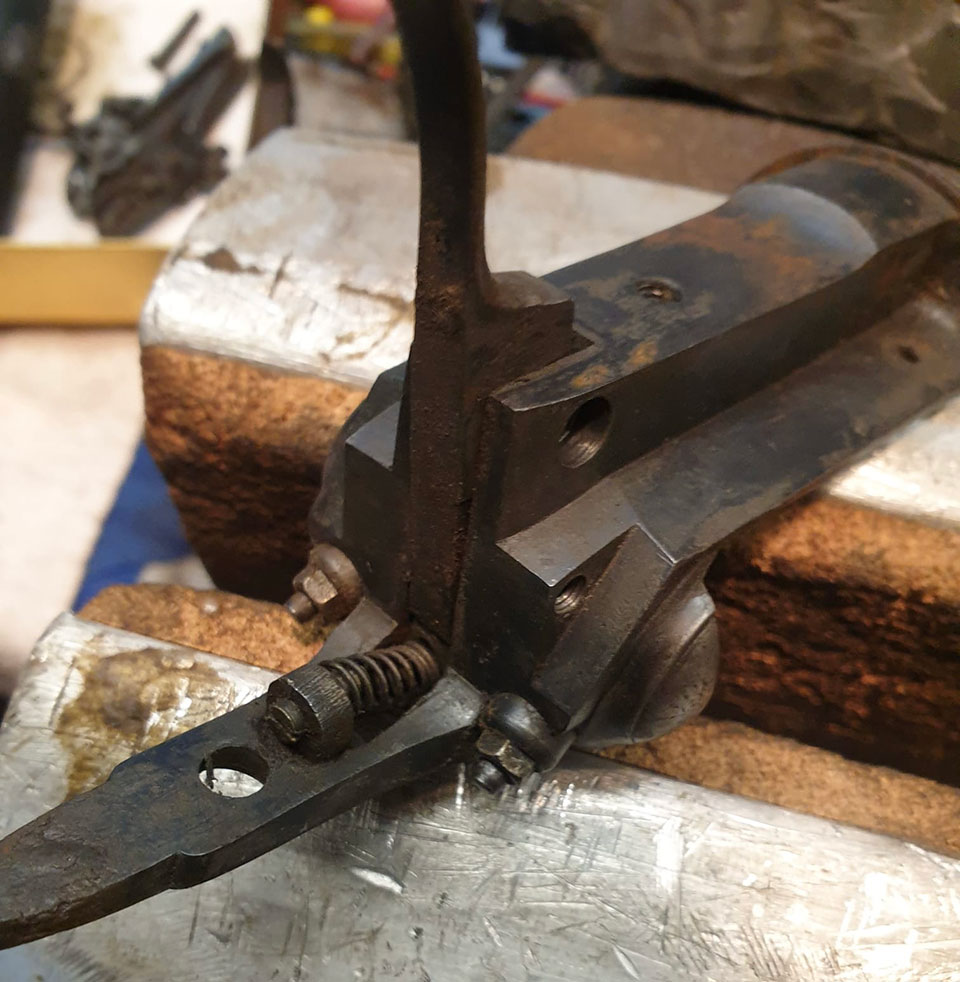
Could it be restored to shootable condition? Yes. Is it economically viable? Probably not. The necessary work would cost around five hundred pounds, the majority of that cost being the rib strip, re-lay and re-browning that would be necessary afterwards. I have started to tidy it up a little, having the gun jointed as best as possible and replacing the rusty old lever spring, which is a fairly crude coil-spring.
However, it sits here as another reminder of the interesting guns our forefathers took afield all those years ago and of the minds working on improving them during the most fertile period of firearms development. In time, I might get it into shootable condition just for the pleasure of trying it out. Like many of these early breech-loaders it still has the feel of a muzzle-loader and is very well made.
That flimsy single bite does not provide very reassuring security but with light loads I'm sure it will still work.
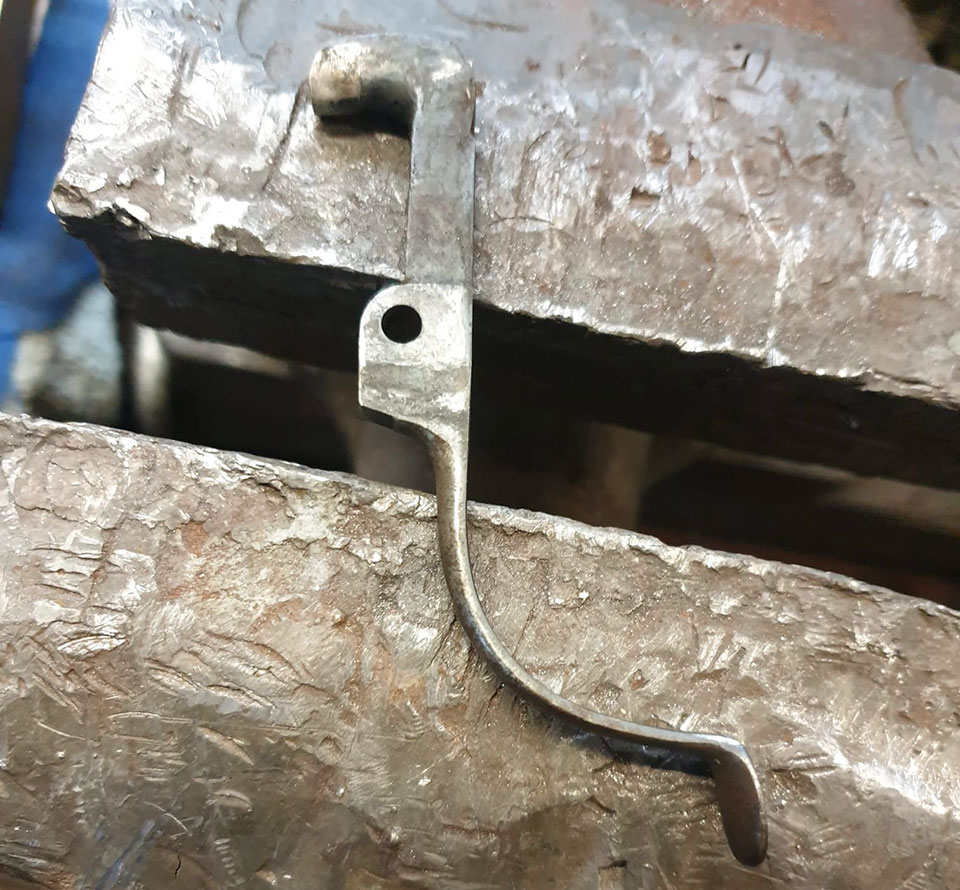
Published by Vintage Guns Ltd on (modified )




